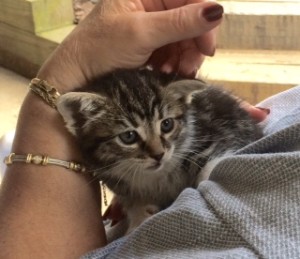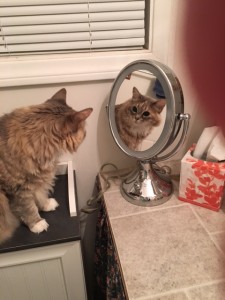 Sure, petting, brushing, and combing Fluffy (or Fido, or Trigger, or even Bun-Bun and Lizzie) is a wonderful way to bond with your animal, but it also helps you to be more attuned to the animal’s overall health. You, the animal’s caretaker, should be the first responder in detecting illness or injury.
Sure, petting, brushing, and combing Fluffy (or Fido, or Trigger, or even Bun-Bun and Lizzie) is a wonderful way to bond with your animal, but it also helps you to be more attuned to the animal’s overall health. You, the animal’s caretaker, should be the first responder in detecting illness or injury.
It’s true. The more you touch your cat, the more likely you are to discover any problems before they become serious. By running your hands over her regularly, you’ll notice any emerging abnormalities—such as lumps or bumps, scratches or scrapes, mats or ticks, and more. When petting or grooming your pet, pay attention to the feel of your animal’s coat, the contour of his body, and his scent. Check Tabby’s claws, look in her mouth, lift her tail, and run your hands over her entire body. She’ll probably love the petting, but maybe not the probing, so be sure to give her a special treat afterward to reward her patience and  good health.
good health.
Certainly, you pay attention to your cat’s behavior. You notice when a gluttonous kitty refuses a meal; a friendly, in-your-face, underfoot-kitty starts hiding out in the back bedroom; when she’s vomiting or suddenly has litter-box issues. But sometimes she might be suffering secretly or she’s not yet suffering from a cancer that’s forming, a flea infestation, an in-grown claw, a skin issue, a bad tooth, ear mites or something else that you would only notice during up close and personal sessions with your cat.
This site gives additional perspectives as to why grooming is important to your cat’s health: https://www.petwave.com/Cats/Basics/Grooming.aspx Here’s a site with information about grooming techniques: http://www.pethealthnetwork.com/cat-health/cat-grooming





